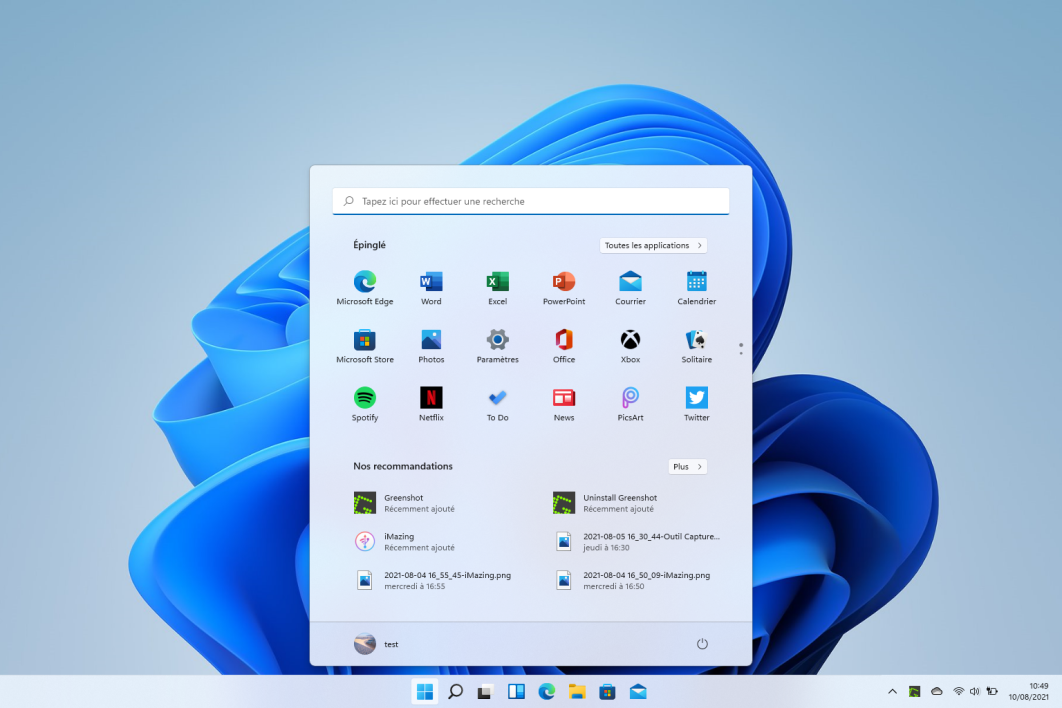Announced with great fanfare this summer, Windows 11 promises a relifting of its graphical interface alongside new features (including the integration of Microsoft Teams, new widgets and a new marketplace).
But among manufacturers ready to begin their transformation towards ARM processors, the OS is more interesting for its different versions.
Microsoft could not miss it: in addition to its traditional x86 version, the ARM edition is now at the heart of the firm’s strategy. A turning point that seems sensitive, Microsoft did not wish to answer our questions on this point.

This is not the first time that Windows has been offered for ARM platforms. In 2012, Microsoft launched Windows RT, a derivative version of Windows 8 designed exclusively for this architecture.
But the product disappointed. Its main weak point? It did not allow installing apps outside of the Microsoft Store. For good reason, third-party software that can be downloaded from the web was incompatible because it was compiled for the x86 architecture.
Suffice to say that the uses were meager. Same problem in 2019 when Microsoft released its Surface Pro X, equipped with a Qualcomm Snapdragon processor to run “Windows 10 on ARM”, the promise was good on paper, but the application ecosystem almost nonexistent.
With Windows 11, Microsoft wants to get back into the race and do everything to encourage manufacturers to adopt an ARM version of its OS.
It is precisely to compensate for the lack of software compatible with processors of the same name that an emulator responding to the sweet name of ARM64EC will be integrated into it. Like Rosetta 2 for Mac OS, it will run applications originally designed for Windows (and x86 technology) on ARM architectures. Easier said than done.
To convince the public, ARM64EC will have to keep its promise in terms of stability, discretion and compatibility with a wide range of applications.
If Apple has successfully made its transition, it is largely thanks to the native support of software such as Photoshop or Premiere Pro from the launch of the M1 chip, even though they were emulated by Rosetta 2.
There is no doubt that Windows 11 will be stable with ARM chips, but the compatibility of third-party software will be the main criteria for users.
Ultimately, emulation should not be the rule, because this technique does not make it possible to take full advantage of the capabilities of the chip on board the PC. Publishers should be encouraged to compile their software for both x86 and ARM.
Reviewing their most beautiful applications to make them compatible with the new architecture, this is what Apple and Microsoft are asking publishers.
A process that requires substantial investments. Why venture into a platform that is little used in the personal computer segment, and therefore not very profitable?
The dilemma is posed. The players pushing for the development of PCs on the ARM architecture must convince of the market potential that this would represent. “It is an economic brake because it will be necessary to compile in parallel two different software sets”, explains Lindsay Chemet, consultant of the consultancy firm ABGI.
Not only will the applications have to be designed for two systems, but they will also have to be maintained in parallel.
The argument does not hold for all players in the sector. Some publishers already offer software compatible with both PCs as well as smartphones and tablets, including those running on ARM. “We have experienced bigger brakes. Developers have long been thinking multi-media. In fact, we already see Android or iOS apps that exist on Windows,” confirms Lindsay Chemet.
The door knocked down by Apple should facilitate movement. Since the launch of the Mac M1 a year ago, the largest publishers have rushed to offer an ARM version of their applications.
Lightroom, Photoshop, Microsoft Office… Everything now works natively on Mac OS. Logically, suppliers will have an interest in doing the same work for the ARM version of Windows 11.










